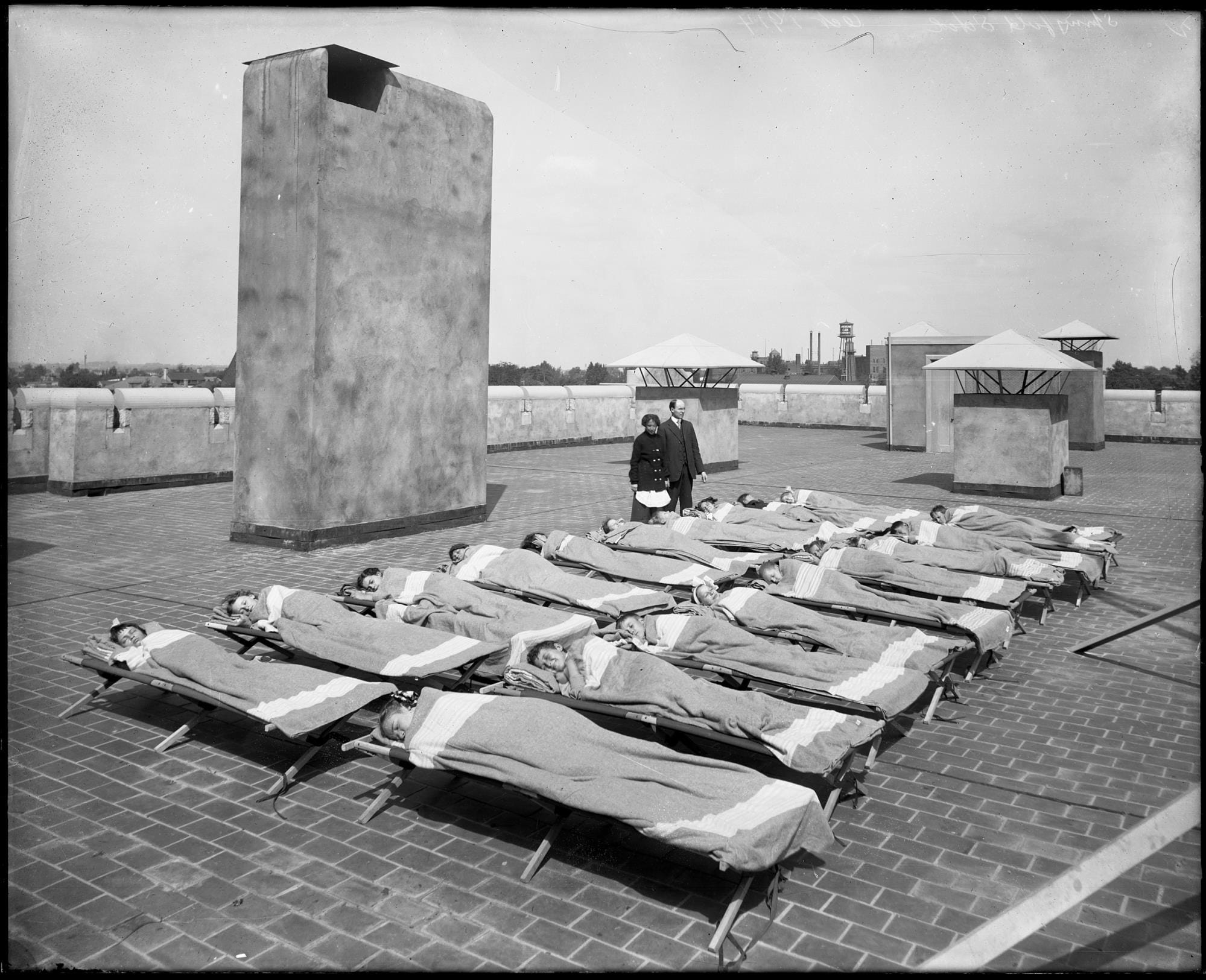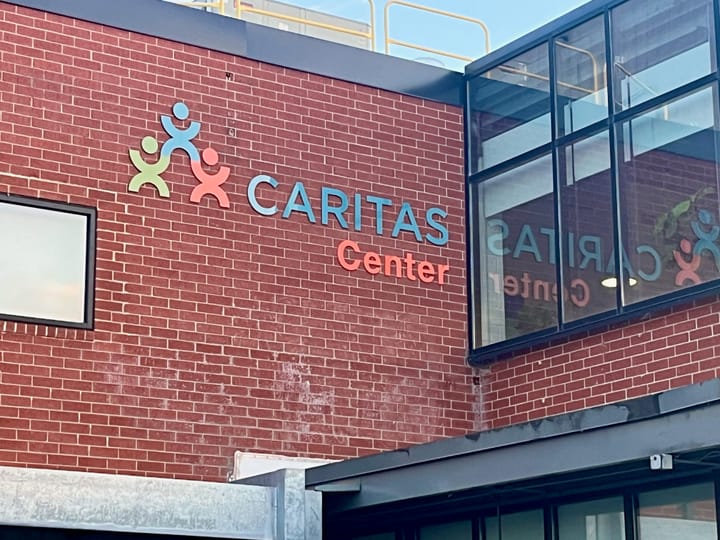The century-old trend Richmond once went crazy for: open rooftop classrooms

For the children who had struggled to make it to the classroom, the roof opened up a whole new world of possibility.
For several decades in the first half of the 20th century, hundreds of students who shuffled through Richmond Public Schools took their lessons, their lunches and even their daily naps on the roofs of the city’s schools — rain or shine, heat or freeze.
The rooftop open-air classrooms weren’t a matter of budget-cutting. On the contrary, they reflected some of the most cutting-edge ideas for urban schooling at a time when many states were passing mandatory public education laws.
That’s because the 1900s and 1910s were also a time of rampant tuberculosis among the groups of poor people who were increasingly leaving the countryside for the cities. According to the U.S. Centers for Disease Control and Prevention, in 1900, about 194 of every 100,000 people in the country died of tuberculosis annually. Virginia officials were sufficiently alarmed to convene a tuberculosis commission, which found more than twice as many people in the commonwealth died from the disease as from typhoid, smallpox, measles, scarlet fever, diphtheria, whooping cough and malaria — combined.
Once Richmond’s civic leaders noticed how many kids weren’t making it to class because of poor health, they seized on a new idea then circulating throughout Europe and the Northeast: open-air schools.
Originating in the Waldeschule of Charlottenburg, Germany in 1904, open-air schooling aimed to restore sickly students to health while also providing them an education. Besides getting children out of cramped quarters where infection could spread rapidly, the schools provided their young scholars with more nourishing food, rest and exercise than they would otherwise get.
After early experiments showed significant weight gain and improvements in learning, the model quickly spread to the U.S., where the first open-air school opened in Providence, Rhode Island.
By 1912, the movement had reached Richmond. That November, urged on by the Richmond Education Association (a group founded by Lila Valentine decades before the emergence of the current REA that acts as an education union), the School Board approved a $1,000 pilot at the Madison School, a structure that once sat at the corner of West Cary Street and South Madison Street and was later demolished for the Downtown Expressway.

The Madison open-air school was intended for students of “tubercular predisposition,” but not those with active tuberculosis, “as the school is in no sense a hospital,” reported the Richmond Times-Dispatch.
“It is to be merely a healthy place for the teaching of those children whom because of their condition it would be unwise to keep in a close school room for long hours daily,” the newspaper continued.
Under the six-week experiment, 20 students were transferred to a rooftop classroom that consisted of iron columns supporting a glass-covered roof. Between the columns, the room was open to the outdoors, with canvas curtains that could be used in the event of rain or snow. The schools supplied blankets and heavy outer clothing for cold weather, while the Richmond Education Association spearheaded fundraising to provide the students with milk, eggs, soup, crackers and white bread.
Besides their lessons, students took rooftop naps on cots, had their temperatures taken and their weight measured daily and practiced washing their hands and brushing their teeth. The city’s school medical director personally selected and monitored each child in the class.
The results were immediate. The Times-Dispatch reported that after six weeks, the children had gained an average of one pound, with one child putting on 4.75 pounds — in hindsight, an outcome likely due more to better food and rest than to fresh air.
“Pale and anaemic six weeks ago, rosy-cheeked and bright-eyed to-day — that is the alchemy worked by a recent innovation inaugurated by the Richmond City School Board,” the paper trumpeted. “Twenty frail youngsters, living exponents of the value of nutritious food and fresh air, are slowly being weaned back to health and vigor without an interruption of their studies.”

Such was the success of the program that the School Board swiftly expanded it to the Springfield School in Church Hill (now home to the Bowler Retirement Community), the Bellevue School (now Bellevue Elementary) and the Baker School in Jackson Ward, which in Richmond’s segregated school system served Black students. The then-under construction Binford Junior High — now Dogwood Middle — in the Fan was also explicitly designed to accommodate a rooftop open-air classroom as well as a rooftop playground.
“No single forward step taken in the rapidly growing city means more right now to Richmond than the establishment of these departments,” the Richmond Times-Dispatch proclaimed in January 1915 while urging all city students to bring a penny to school in recognition of “Open Air School Day.”
The open-air schools continued to show results: By 1922, the schools were reporting that over the course of a term on the roof, students gained an average of nine pounds and the quality of their schoolwork improved to the level of the regular classroom.
Students weren’t intended to stay in the open-air classrooms permanently. Once their health and educational performance had stabilized, they were returned to their assigned class.
In 1924, the Times-Dispatch reported 380 students were enrolled in open-air classes at 19 schools serving both white and Black children. A peak of 20 schools was recorded in 1928.
Much of the spread of the model was due to Richmond’s pioneering schools architect, Charles M. Robinson, who designed nearly every notable school in the city in the first three decades of the 20th century as well as hundreds of school and university buildings around the state. It was Robinson who designed the pilot rooftop classroom on the Madison School and added the structures to other schools throughout the city.
“This guy was way ahead of his time,” said Liz Boastfield, who featured Robinson’s work at Dogwood Middle during the most recent Fan Holiday House Tour. “He had an idea of what was going on in Europe and Germany with the open-air classrooms, and he brought it to the southern states.”
Robinson, who in 2019 was the subject of an exhibition at the Branch Museum of Architecture and Design, didn’t stop at rooftop classes. His school designs also incorporated large, louvered windows that could be easily swung open to allow fresh air inside, as well as transoms over every classroom door to improve circulation.
“On any given day, any day of the year, part of these windows could be opened,” said Boastfield. Robinson, she added, “was sensitive to the health and wellbeing of the people in his buildings.”
Eventually, though, the idea fell out of fashion. Improvements in public health led to major declines in tuberculosis, the rooftop classrooms were disassembled, and the windows once praised for allowing air to circulate became more of an albatross in many schools as they aged and gave rise to leaks. The era of open-air classes on rooftops was forgotten.






